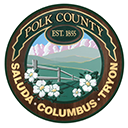October Lawn and Garden Tips
go.ncsu.edu/readext?963732
en Español / em Português
El inglés es el idioma de control de esta página. En la medida en que haya algún conflicto entre la traducción al inglés y la traducción, el inglés prevalece.
Al hacer clic en el enlace de traducción se activa un servicio de traducción gratuito para convertir la página al español. Al igual que con cualquier traducción por Internet, la conversión no es sensible al contexto y puede que no traduzca el texto en su significado original. NC State Extension no garantiza la exactitud del texto traducido. Por favor, tenga en cuenta que algunas aplicaciones y/o servicios pueden no funcionar como se espera cuando se traducen.
Português
Inglês é o idioma de controle desta página. Na medida que haja algum conflito entre o texto original em Inglês e a tradução, o Inglês prevalece.
Ao clicar no link de tradução, um serviço gratuito de tradução será ativado para converter a página para o Português. Como em qualquer tradução pela internet, a conversão não é sensivel ao contexto e pode não ocorrer a tradução para o significado orginal. O serviço de Extensão da Carolina do Norte (NC State Extension) não garante a exatidão do texto traduzido. Por favor, observe que algumas funções ou serviços podem não funcionar como esperado após a tradução.
English
English is the controlling language of this page. To the extent there is any conflict between the English text and the translation, English controls.
Clicking on the translation link activates a free translation service to convert the page to Spanish. As with any Internet translation, the conversion is not context-sensitive and may not translate the text to its original meaning. NC State Extension does not guarantee the accuracy of the translated text. Please note that some applications and/or services may not function as expected when translated.
Collapse ▲In the Lawn….
Newly Seeded Fescue Lawns – Lawn seeding is typically done between mid September and late October in our area (if we have rain). For new lawns, Fescue is typically seeded at 10 pounds per 1000 sqft. If you have an established lawn you can overseed at a rate of 3-6 pounds per 1000 sqft depending on the thickness of your current lawn. New grass has very small, shallow roots. Keep them moist if the rains fail and don’t let falling leaves smother them. Use a leaf blower on low power or rake VERY gently because you may uproot the tender young plants. Apply 10 pounds of 10-10-10 or 6 pounds of 17-17-17 per 1000 sqft at seeding and again near thanksgiving to give the lawn a final boost before winter. If you are thinking about
installing a warm season grass lawn such as Bermuda or Zoysia, be sure to wait until May to do any seeding or sodding of these types of grasses for the best results.
Shrubs & Trees –
October is a good month to plant shrubs and trees(if it rains). At this time the soil is still warm enough to encourage root growth and will allow your plants to get established before the harsh cold of winter and will give them a boost for next spring. Be sure to water the plants thoroughly for several weeks after planting to ensure they do not dry out if rain is not plentiful. If you are interested in plating herbaceous perennials, those are best planted in the spring.
It’s still not too late for some fall color. You can plant pansies now for a little fall/winter color and they will be established and give you a good show of color in the spring as well.
Bring houseplants indoors when temperatures dip below 50°F. Give them a good bath in soapy water or spray with insecticidal soap. Move plants into partial shade for a week to condition them to lower light levels indoors. Remember that indoor humidity is normally very low inside the house in the winter so be sure to mist your plant’s leaves with water along with watering their roots.
Fall is a great time to spread mulch in the landscape. Aim for a maximum depth of 3” to 4” around trees or shrubs and 2” to 3” around perennials. Do not pile mulch deeply around the trunks of trees and shrubs as it can cause them to rot. I’m a fan of pine bark nuggets as they will last much longer than wood mulch. The pine bark doesn’t decompose nearly as fast as the wood making mulching a less frequent job.
In the Garden….
By this time in the garden you should have all your winter crops planted. These include root crops, cole crops and lettuces. These crops can provide you a harvest through most of the winter with very little cold protection. Fertilize these crops while it is still warm enough to achieve maximum growth. During fall warm dry periods be sure to provide irrigation.
In areas not used for fall vegetable production make sure you plant a cover crop.
Winter Rye (grain) or Annual Rye Grass are excellent choices for a winter cover crop. These grasses are easy to grow and provide massive amounts of organic matter for your soil and prevents winter erosion. Leaving the soil bare should never be an option.




